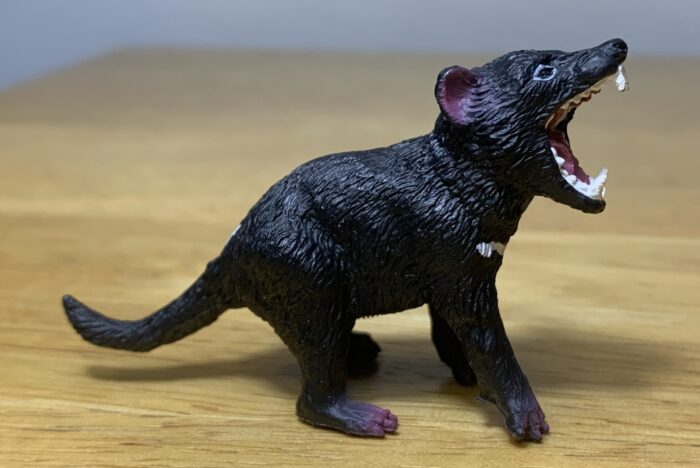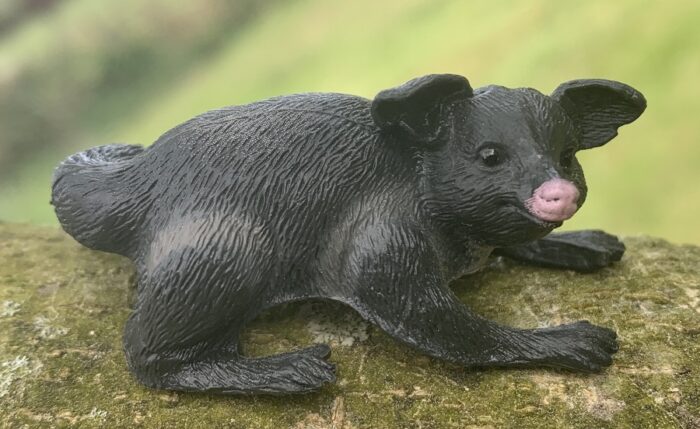With the extinction of the thylacine the Tasmanian devil (Sarcophilus harrisii) claimed the title of the largest extant marsupial predator, weighing up the 18 lbs. (8 kg.) in the case of males. Not a terribly impressive size for the largest marsupial predator, I’ve had cats that outweigh the Tasmanian devil!
Monarch Butterfly, caterpillar (Hidden Kingdom Smithsonian Insects by Safari Ltd.)
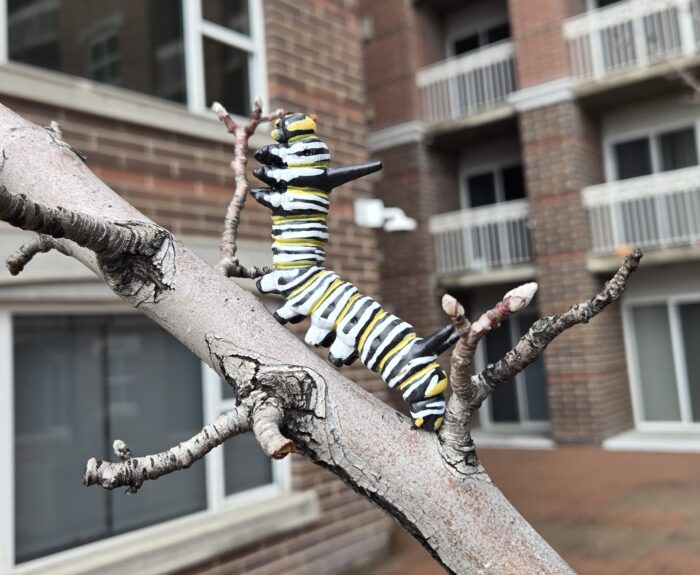
In following the trends of Safari Ltd.’s Tennessee Aquarium Salamander, Monterey Bay Aquarium, and Marsh Education Fish collections, I am going to attempt to finish, or assist in finishing, Safari’s Hidden Kingdom Smithsonian Insects collection (the lubber grasshopper, black widow, and flea have already been reviewed). If I remember correctly, the figures were originally produced by Safari in the late 1990s alongside a traveling museum exhibit sponsored by the Smithsonian Institution that featured large animatronic insects.
Hermit Crab (Marine Animal Models by TNG)

Despite having the common name ‘crab’, hermit crabs are not ‘true’ crabs, meaning they are not a part of the clade Brachyura. They belong to its sister group, Anomura, which also contains porcelain crabs, squat lobsters, mole crabs, and king crabs. Broadly speaking, hermit crabs encompass the superfamily Paguroidea which includes the king crabs.
Frogs Figurines Playset (Toymany)

Today I will be presenting a brief overview of the 2024 Frogs collection by Toymany, which was kindly gifted as a review sample by @Kenc and the folks at Toymany for the Blog. This was intended to be posted yesterday when the set was announced, but I was traveling for work so it’s coming up a day late.
Bats (Play Visions)
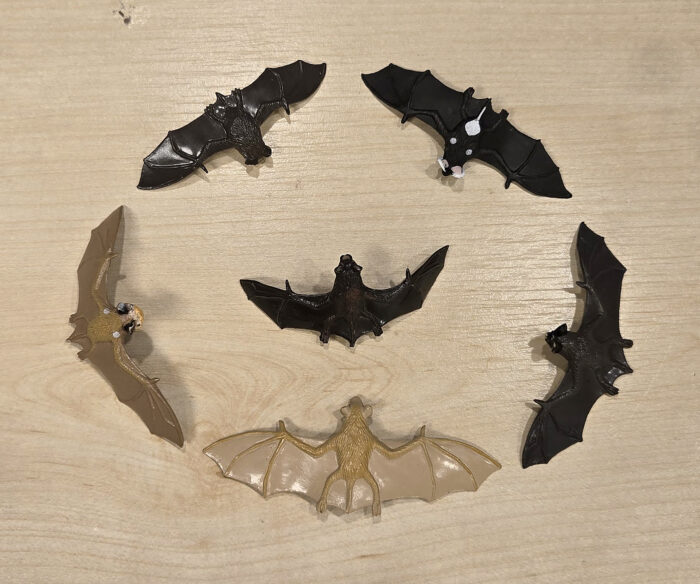
There are two mammals, or perhaps broadly groups of mammals, that exemplify Halloween. One is the black cat. The other is the bat. Bats have a long history in human folklore, tradition, and fictional literature and cinema. In North America, the Creek, Cherokee, and Apache viewed the bat as a trickster god.
Frilled Lizard (Little Wonders by CollectA)
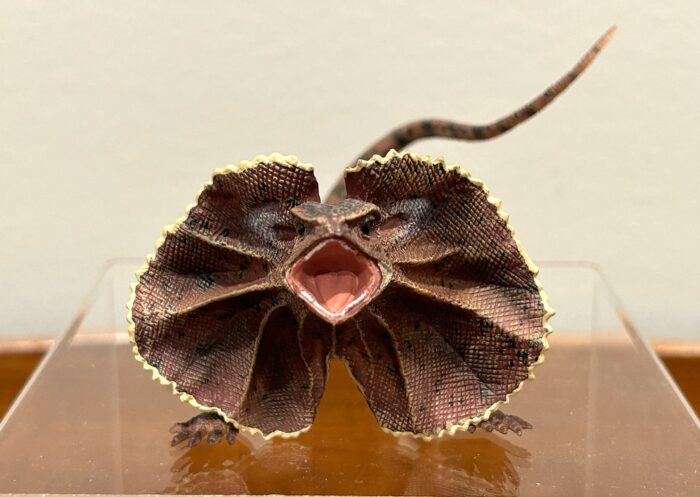
Review and images by Suspsy; edited by bmathison1972
The frilled lizard (Chlamydosaurus kingii), also known as the frill-necked lizard or frilled dragon, is one of Australia’s most famous animals, right up there with the saltwater crocodile, dingo, wombat, koala, and kangaroo. Active in the daytime, it spends most of its time in the trees foraging for insects and other small animals.
Spotted Wobbegong (Coral Reef Diver Set by Schleich)
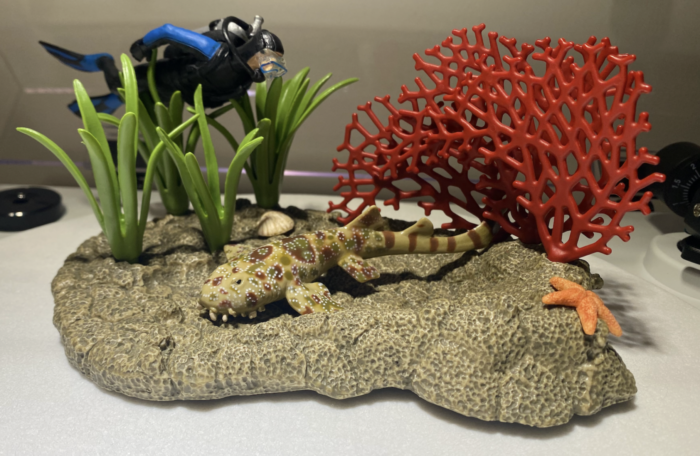
Review and images by Alopias superciliosus; edited by bmathison1972
I’m happy to be returning for my second Shark Week; always a pleasure to nerd about obscure sharks! For this year’s installment we are going as far away geographically from my Greenland Shark review last year as possible, “down under” to discuss the weird and wonderful Spotted Wobbegong, Orectolobus maculatus.
Crawlers (Pocket Explorers by Phidal Publishing Inc.)

Pocket Explorers is a line of books by put out by Phidal Publishing. They designed for children and are educationally driven. Looking at their website, the themes are Reptiles, Wild Cats, Dinosaurs, Sharks, Polar Animals, Birds of Prey, Bears, and Crawlers, the last of which we will be looking at today.
Black-flanked Rock-wallaby (Animals with Superpowers by Yowie Group)

Last week we looked at a macropod that makes its home in the trees, this week we’re looking at one that prefers to dwell among the rocks. The black-flanked rock wallaby (Petrogale lateralis) is a species of rock-wallaby found among rocky outcrops and cliffs in small, scattered populations throughout western Australia.
Matschie’s Tree-kangaroo (Wild Safari Wildlife by Safari Ltd.)

Tree-kangaroos of the genus Dendrolagus are unique and fascinating animals in that they’re the only macropods adapted for an arboreal lifestyle. Indeed, while they move about awkwardly on land, they are quite agile in the trees. They possess a number of adaptations for living this lifestyle including broad hindfeet, long claws, dexterous hands, patches of rough skin on the hands and feet for gripping, and tails that are proportionally longer than those of their terrestrial counterparts, which allows for greater balance.
Yellow-bellied Glider (Baby Animals by Yowie Group)
Wombat (Wild Safari Wildlife by Safari Ltd.)

Wombats are a group of strong and stout marsupials from Australia that belong to the Vombatidae family. In many respects they are convergent with ground squirrels and other burrowing rodents found elsewhere in the world, living in extensive burrows that they excavate themselves and feeding on grasses, plant roots, and other low growing vegetation.

